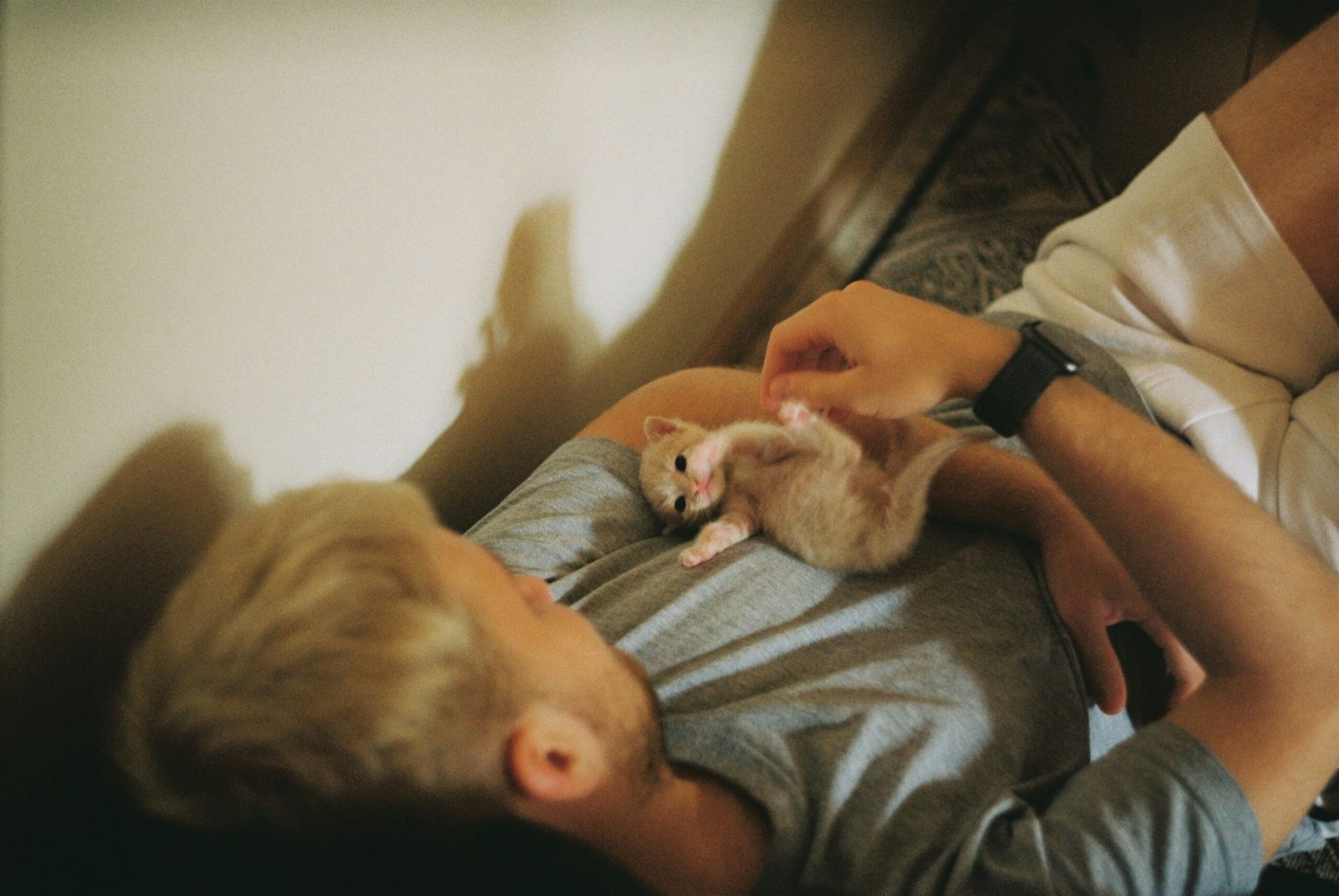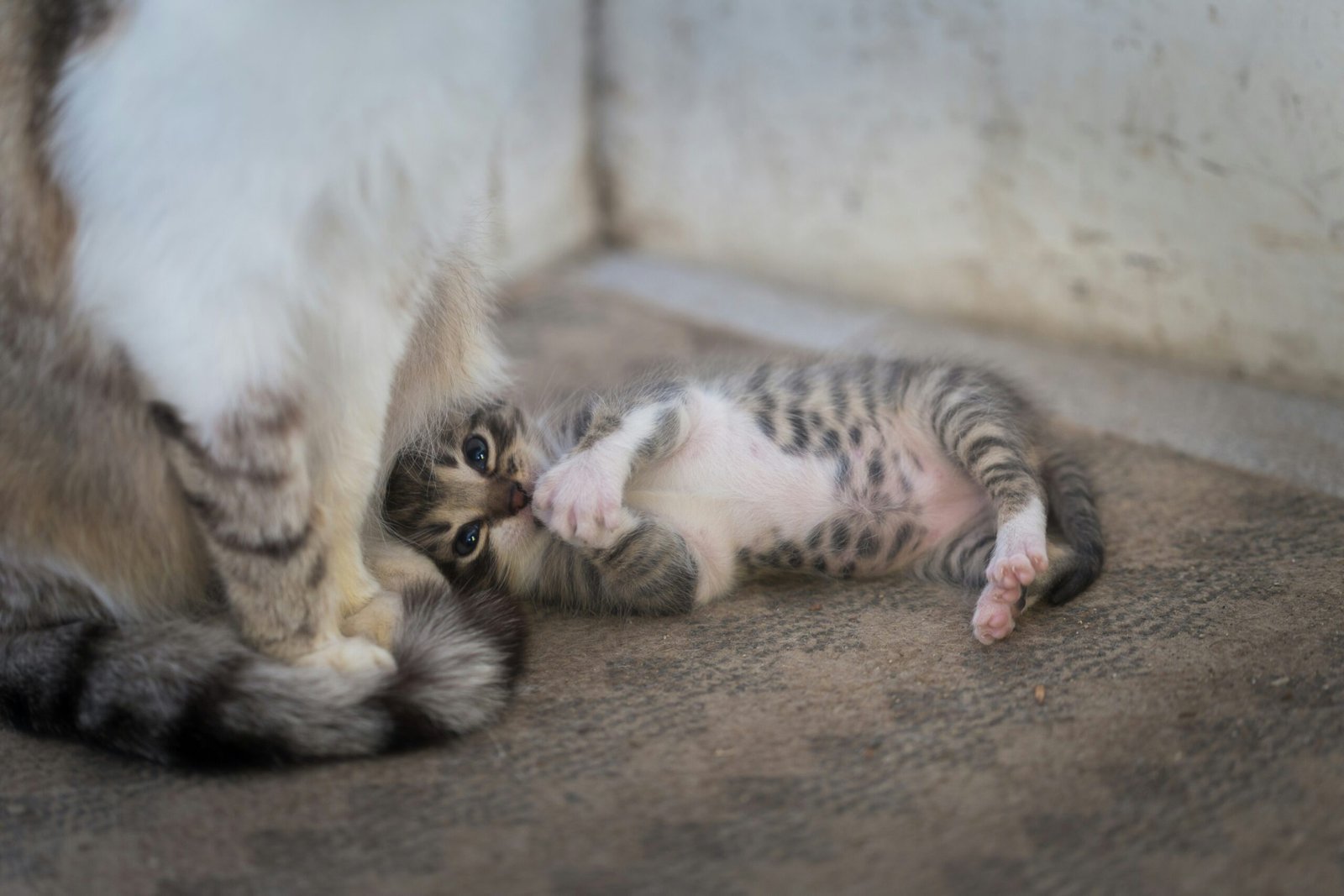How to tell if a cat is pregnant is a question many cat owners face, especially if their unspayed female, or “queen,” has had access to intact male cats. Unlike in humans, the signs can be subtle at first, leaving you to wonder and watch for clues. Is she just gaining a little weight, or is there a litter of kittens on the way? Distinguishing between a cat who’s simply eaten a few too many treats and one who is expecting requires a keen eye. Fortunately, as the pregnancy progresses over its typical nine-week course, a combination of distinct physical and behavioral changes will emerge.
This guide will walk you through the seven clearest signs, providing you with the essential information on how to tell if a cat is pregnant.
1. Changes in the Heat Cycle
One of the very first, albeit passive, signs of pregnancy is the cessation of the heat cycle. A female cat typically goes into heat (estrus) every few weeks during the breeding season (which can be nearly year-round for indoor cats). This period is characterized by very noticeable behaviors: loud, persistent vocalizing (yowling), excessive affection, rubbing against everything, and adopting a distinct mating posture. If your queen has been regularly going into heat and suddenly stops, pregnancy is a strong possibility. For owners who are familiar with their cat’s regular cycles, this sudden silence can be the most telling early indicator. Understanding this change is a fundamental aspect of how to tell if a cat is pregnant.
2. “Pinking Up”: Nipple Changes
Perhaps the most classic and widely recognized visual clue is a change in the cat’s nipples. Around the third week of pregnancy, you may notice that her nipples become enlarged and darken to a rosy pink or even a reddish color. This phenomenon, known as “pinking up,” happens as the mammary glands prepare for milk production to nurse the future kittens. This sign is often easier to spot in first-time mothers or cats with light-colored fur. It’s a very reliable sign, and for many, it’s the first time they truly begin to suspect they have a pregnant cat on their hands. Looking for this physical marker is a key step in how to tell if a cat is pregnant.
3. Increased Appetite and Weight Gain
As the pregnancy advances into its second trimester (around week four), the nutritional demands on the queen’s body skyrocket. She isn’t just eating for one anymore; she’s fueling the rapid development of an entire litter. You will likely notice a significant and steady increase in her appetite. She’ll be more interested in her food bowl and may even seem constantly hungry.
This increased food intake naturally leads to weight gain. A pregnant cat will typically gain between 2 to 4 pounds (or about 1 to 2 kg) over the course of her gestation, depending on the number of kittens she is carrying. This weight gain will be gradual but consistent, making it a critical observation for anyone learning how to tell if a cat is pregnant.

4. A Swollen, Enlarged Abdomen
The most undeniable sign, of course, is a visibly growing belly. This change usually becomes apparent around the fifth week of pregnancy. Her abdomen will begin to look swollen and rounded. It’s important to be gentle and avoid pressing on her stomach, as this could potentially harm the mother or her developing fetuses.
The swelling will become more and more pronounced as she enters the final weeks of her term. It’s crucial not to mistake a swollen belly for simple weight gain from overeating; in a pregnant cat, the growth is concentrated in the abdominal area, whereas a cat gaining weight from food will typically show it more evenly across their body, including the neck and legs. This visual cue is a central part of how to tell if a cat is pregnant.
5. Behavioral Shifts: Increased Affection and “Nesting”
Pregnancy doesn’t just change a cat’s body; it also alters her behavior. Many pregnant queens become noticeably more maternal and affectionate. Your once-independent cat might suddenly become your shadow, constantly seeking your attention, purring loudly, and demanding lap time and gentle pets. This is often her instinct to seek comfort and security.
As she approaches the final two weeks of her pregnancy, you will witness another powerful instinctual behavior: nesting. The queen will start actively searching for a safe, quiet, and private place where she can give birth. You might find her exploring closets, hiding under beds, or settling into laundry baskets. This is your cue to help her. You can provide a “nesting box”—a cardboard box with low sides, lined with soft towels or blankets—and place it in a warm, low-traffic area of your home. Observing these behavioral changes is a more nuanced, yet vital, part of knowing how to tell if a cat is pregnant. The nesting instinct is a powerful sign.
6. Morning Sickness and Lethargy
Believe it or not, some cats can experience a form of “morning sickness,” just like humans. This may occur around the third or fourth week of pregnancy and can manifest as brief periods of vomiting, nausea, or a temporary decrease in appetite. It’s usually a passing phase and not a cause for major concern unless it is severe or prolonged. Alongside this, you may notice that your cat seems more tired than usual. Growing kittens is hard work, and her energy levels may dip.
Increased lethargy and more time spent napping are common, especially in the early and late stages of gestation. Paying attention to her energy levels can help in determining how to tell if a cat is pregnant.
7. Veterinary Confirmation
While the above signs are strong indicators, the only way to know for sure is through a visit to the veterinarian. A professional diagnosis is the most reliable method for how to tell if a cat is pregnant and is essential for ensuring the health of the mother and her future litter. Your vet has several ways to confirm the pregnancy:
- Palpation: After about three to four weeks, a skilled vet can gently feel the cat’s abdomen to detect the presence of the developing fetuses.
- Ultrasound: As early as day 25, an ultrasound can not only confirm the pregnancy but also detect the kittens’ heartbeats. It can give an estimate of the litter size, though it’s not always precise.
- X-ray: Later in the pregnancy (after day 42), an X-ray is the most accurate method for getting a definitive kitten count. This is because the kittens’ spines and skulls have mineralized enough to be visible.
A vet visit is the conclusive step in how to tell if a cat is pregnant. It provides peace of mind and allows you to plan properly for the upcoming birth. So, while you’re watching for all the physical and behavioral clues, remember that the question of how to tell if a cat is pregnant is always best answered with professional medical confirmation.
The combined knowledge of at-home observation and veterinary care is the ultimate guide for how to tell if a cat is pregnant. Learning how to tell if a cat is pregnant is a responsibility for any owner of an unspayed female. Ultimately, the surefire way for how to tell if a cat is pregnant is a trip to your trusted veterinarian.



